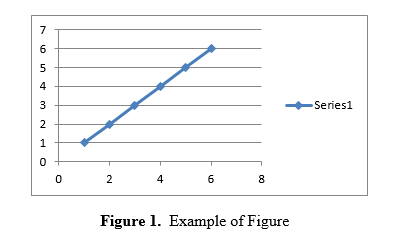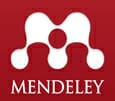Author Guidelines
International Journal of Business Studies (IJBS) is an international open access and peer-reviewed journal published tri-annually in February, June, and October by IPMI Research Center, Sekolah Tinggi Manajemen IPMI.
IJBS aimed to provide research articles in order to have a significant implication on the world of business management studies. In addition, IJBS’s primary objective is to bridge the gap between theory and practice in business management.
The journal covers a variety of business management topics and original researchers in the following areas such as: Business Economics, Business Ethics, Marketing Management, Finance Management, Operation Management, Strategic Management, Entrepreneurship, Innovation and Competitiveness, Sustainable Development, Human Resource Management, Leadership, Organizational Behavior, Change Management, Risk Management, e-Business, International Business, Knowledge Management, Management Accounting, Management Control System, Management Information System, and Supply Chain Management.
Every manuscript contains research methods, empirical results, managerial implication and latest references from primary sources which based on Indonesian context or global issues that have a significant impact on contribution to the development of business management in Indonesia. Furthermore, IJBS is highly relevant for all professionals, managers, directors, consultants, entrepreneurs, business scholars, professors, academic researchers and graduate students in the field of business management.
All papers submitted to this journal must be written in good English. Authors for whom English is not their native language are encouraged to have their paper be checked before submission for grammar and clarity. The work should not have been published or submitted for publication elsewhere.
1. General Author Guidelines
- All manuscripts must be submitted to IJBS Editorial Office using Online Submission Service at this following URL address: http://ijbs.ipmi.ac.id/index.php/ijbs/submission/wizard, where Author should register first as Author role.
- The text submitted by the author is the original scientific paper, has never been published, and is not being submitted for publication in other media / journals.
- The author's name is written without academic degrees. If a script is written by a team or more than one person, the editor will communicate only with the main author or the author whose name is listed in the first place.
- The manuscript is written with Times New Roman of font 12 with single spacing and one column format. The manuscript begins with abstract of 150-200 words written in English.
- References are derived from the last 5-10 years literatures and >60% of the references are derived from reputable journal articles (recommended).
If authors have any problems on the online submission, please contact Editorial Office at the following email: ijbs@ipmi.ac.id
2. Manuscript Template
Manuscript should be prepared according to the following author guidelines in the MS Word article template format: IJBSTemplate
3. Reviewing Process Manuscripts
Every submitted paper is independently reviewed by at least two peer-reviewers. The decision for publication, amendment, or rejection is based upon their reports/recommendation and made solely by Editor. If two or more reviewers consider a manuscript unsuitable for publication in this journal, a statement explaining the basis for the decision will be sent to the authors after the submission date.
4. Guideline for Online Submission
Author should first register as Author Role and may be offered as Reviewer through the following address: http://ijbs.ipmi.ac.id/index.php/ijbs/user/register
The following are five steps in online submission process:
1) Step 1 - Starting the Submission: Author must check-mark on all the Submission Requirements checklists.
2) Step 2 - Uploading the Submission: To upload a manuscript to this journal, select Article Component (e.g. "Article Text") and click "Upload File" button. Choose the manuscript document file (.doc/.docx) to be submitted, then click "Upload" button until the file has been uploaded.
3) Step 3 - Entering Submission’s Metadata: In this step, detail authors metadata should be entered including marked corresponding author. After that, manuscript title and abstract must be uploaded by copying the text and paste in the textbox including keywords.
4) Step 4 – Confirming the Submission: Author should final check the uploaded manuscript documents in this step. To submit the manuscript to IJBS, click Finish Submission button after the documents are true. The corresponding author or the principal contact will receive an acknowledgment by email and will be able to view the submission’s progress through the editorial process by logging in to the journal web address site.
After this submission, Authors who submit the manuscript will get a confirmation email about the submission automatically. Therefore, Authors are able to track their submission status at any time by logging in to the online submission interface. The submission tracking includes a status of manuscript review and editorial process.
5. Author Fee ()
International Journal of Business Studies is an open access international journal. Since manuscript submission year 2020. Authors should pay some processing and submission fees for article publication (Rp1.000.000), except for conference collaboration or fast-track (Rp1.500.000). Readers can read and download any full-text articles for free of charge.
6. Manuscript Preparation Guidelines
A Title Should be Concise to Express the Entire Content
First Author1,
1Affiliation/Institution, Institution address, provinces/city, Post code
1Email: your.email@certain.site
Second Author2
2Affiliation/Institution, Institution address, provinces/city, Post code
2Email: your.email@certain.site
Third Author3
3Affiliation/Institution, Institution address, provinces/city, Post code
3Email: your.email@certain.site
Abstract
A well-prepared abstract enables the reader to identify the basic content of a document quickly and accurately, to determine its relevance to their interests, and thus to decide whether to read the document in its entirety. The Abstract should be informative and completely self-explanatory, provide a clear statement of the problem, the proposed approach or solution, and point out major findings and conclusions. The Abstract should be 150 to 250 words in length. The abstract should be written in the past tense. Standard nomenclature should be used, abbreviations and citation should be avoided in the abstract.
Keywords: This section should contain 3 to 5 words separated by commas.
JEL:
INTRODUCTION
The introduction section should present the issue, state the problem, scope and objective of the paper, describe the methods, and provide an overview of the main results of the work. Subsections can be added as necessary. In this section, please add more citation for your references.
LITERATURE REVIEW
Briefly review the pertinent literature.
RESEARCH METHOD
The methodology must be clearly stated and described in sufficient detail or with sufficient references. The author shall explain the research question, describe the research framework, and the methods applied in detail. It should be furthermore highlighted why the research question is relevant to theory and practice, and why the chosen method(s) are suited for the problem.
RESULTS AND DISCUSSIONS
This chapter contains the results of research. The results can be presented in the form of text, tables, images, maps and accompanying interpretation associated with the results that have been reported. The arguments and findings are sufficiently described in this section.
Note: Authors are encouraged to add discussion section where their research can be compared with other previous researchers.


CONCLUSION
Conclusions should include (1) the principles and generalizations inferred from the results, (2) any exceptions, problems or limitations of the work, (3) theoretical and/or practical implications of the work, and (4) conclusions drawn and recommendations.
REFERENCES
Bibliography follows the system name and year (APA style) sorted alphabetically last name authors. Authors are encouraged to use application Mendeley or EndNote for references. The following are some examples of writing bibliography;
Book
Abdul-Rahman, A., dan Morakot, P. (2008) Spatial Data Modelling for 3D GIS. Fifth Edition. Berlin: Springer.
Baron, Robert, and Jerald, G. (1997), Organizational Behavior. Sixth Edition. Prentice Hall, New Jersey.
Book with Editor
Danaher, P. (ed.) (1998) Beyond the ferris wheel, Rockhampton: CQU Press.
Book Chapter with Editor
Byrne, J. (1995) ‘Disabilities in tertiary education’, in Rowan, L. and McNamee, J. (ed.) Voices of a Margin, Rockhampton: CQU Press.
Anonymous Book
The University Encyclopedia (1985) London: Roydon.
Mass Media with Known Author
Priyana, Y. (2010) ‘Dampak Solo Car Free Day Terhadap Lingkungan, Solopos, 4 April, p. 1.
Mass Media without Author
‘Dampak Solo Car Free Day Terhadap Lingkungan, Solopos, (4 April 2010), p. 3.
Journal Article
Santosa, W. S. dan Adji, N. A. (2007) The Investigation of Ground Water Potential by Vertical Electrical Sounding (VES) Approach in Arguni Bay Region, Kaimana Regency, West Papua. Forum Geografi. Vol. 21, No.1, pp. 103-115.
Web (avoid this source when possible)
Neumann, A., dan Andréas M, W. (2000) Vector-based Web Cartography: Enabler SVG, [online], dari: www.carto.net [5 August 2008].
7. Policy on the Use of AI Technologies in Writing
Authors may use generative AI or AI-assisted tools to improve the readability and language of their manuscripts, but not to perform core scholarly tasks such as generating insights, drawing conclusions, or making recommendations. Use of AI must always be under human oversight, and authors remain fully responsible for the content.
The use of AI tools must be transparently disclosed in the manuscript. However, AI tools should not be listed as authors, as authorship implies responsibilities that only humans can fulfill.
This policy applies to the writing process only, not to the analytical use of AI in research.










